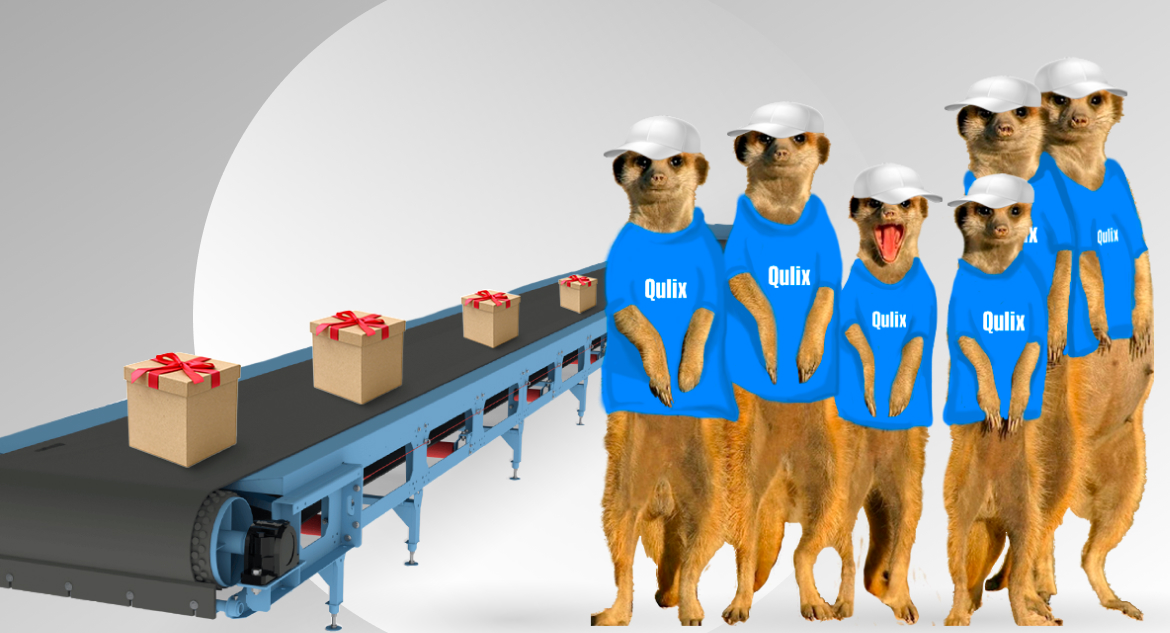Is there any point to use machine learning for manufacturing companies? You know, there definitely is. Just take a look at the numbers: the global machine learning market is expected to grow from $21.17 billion in 2022 to $209.91 billion by 2029. If ML wasn't delivering profitable business opportunities, it wouldn't have attracted such money. It is logical to assume that wherever machine learning goes, business efficiency follows.
Without further ado, let's explore the benefits of machine learning in manufacturing and take a look at how five global companies utilize it.
written by:
Alexander Arabey
Director of Business Development
Contents
What Are the Benefits of Using Machine Learning for Manufacturing Process Optimization?
The manufacturing sector exists in the state of constant movement: supply chain management, shipments, product quality control, product design — all these processes happen simultaneously all the time. Such intensity makes the list of what can go wrong limitless, thus bringing increasingly more challenges to manufacturers. The bad news is that it is difficult for humans to process progressively more data sets without errors. The good news is… we kinda don't have to do that anymore. Why? We can use ML.
You surely know that machine learning is a subdivision of artificial intelligence, and it entails supplying ML algorithms with raw data, so they could process and learn from it. But how do manufacturing companies benefit from putting machine learning to use? Let's find that out below.
Better Data Management
Since machine learning directly deals with data, better data management is its natural outcome. But what exactly does this mean for manufacturers?
- First and foremost, access to modern tools for data management leads to supply chain optimization. AI technology in general and ML models in particular provide comprehensive analysis of the inventory, transportation, logistics, product processing, and planning, identify what might be halting each of the processes, and offer solutions to fix that. For example, machine learning can build delivery routes, track driver’s performance in real-time, and process data like weather and traffic reports to calculate more accurate delivery schedules in the future. Also, statistics helps manufacturing companies predict market demand, which means they can avoid creating an excessive number of products or invest more efforts into producing items that exhibit great potential. As a result, supply chain optimization brings such advantages as lower operating costs and more efficient workflow.
- Predictive maintenance is yet another way to enhance your manufacturing process with machine learning algorithms. As Deloitte reports, “On average, predictive maintenance increases productivity by 25%, reduces breakdowns by 70% and lowers maintenance costs by 25%. It is based on advanced analytics and marks a new way of organizing and implementing maintenance on an industrial scale.” Simply put, this technique protects the manufacturing process from halting: it uses analytics to foresee equipment failures and schedule timely service. It also helps save money: it is significantly cheaper to replace a component of a machine than the whole thing.
Elevated Security
An ML system relies on networks, cloud platforms, internal databases, various apps, and operating systems. Security of every component in this technological chain is crucial, and for players in the manufacturing industry, it is vital to spot threats within a network, protect data on the cloud, provide endpoint malware protection, etc. You can achieve it all through cybersecurity systems powered by artificial intelligence and risk detection mechanisms. Machine learning algorithms can discover and stop anomalies and, if necessary, notify certain teams about an attack to prevent further damage.
Improved Quality Control
- Quality assurance issues in the manufacturing environment inevitably lead to customer complaints, financial losses, and reputational damage. Luckily, machine learning and artificial intelligence help avoid such unfortunate turns of events. Machine learning tools carry out anomaly detection in products, as well as automate the inspection process and routine tasks that help estimate equipment’s remaining useful life, performance, and spot defects. Thus, proper quality control leads to enhanced customer experience and cost reduction of manufacturing, too.
- With the usage of automated quality testing, the risk of errors caused by human intervention in production processes significantly goes down. According to the report by McKinsey & Company, “By employing advanced image recognition techniques for visual inspection and fault detection, productivity increases of up to 50% are possible. Specifically, AI-based visual inspection based on image recognition may increase defect detection rates by up to 90% as compared to human inspection.”
Raised Business Efficiency
- The introduction of machine learning into manufacturing processes leads to continuous improvement of business efficiency. As many processes are now automated, manufacturing is quicker and much more cost-efficient (companies can budget better using appropriate data insights). Take a look at Google: with machine learning, they reduced the energy used for cooling their data centers by 40%. That definitely made the company's bills a lot more pleasant to look at! Mustafa Suleyman, the co-founder of DeepMind, Google's research company, told Wired, “What we've been trying to do is build a better predictive model that essentially uses less energy to power the cooling system by more accurately predicting when the incoming compute load is likely to land.”
- Additionally, work environments that want to take care of their employees choose machine learning solutions to provide them with more safety. For example, companies can use control charts and machine learning for anomaly detection in manufacturing (i.e., toxic gas emissions) and monitor whether employees are wearing the correct protective gear. The outcome of this is healthy workers whose lives are not endangered and a smooth — both in terms of operations and finances — work process.
Machine Learning Solutions in Practice: Let’s Take a Look at Use Cases
Canon
For quality control, Canon widely utilizes artificial intelligence and, more specifically, deep learning, i.e., a subset of machine learning. One of the services that it provides to others is image-based infrastructure inspection that now helps keep expressways in Japan safe. In the past, an engineer had to visually inspect each expressway and draw a sketch of a detected defect. But now, with Canon's “Inspection EYE for Infrastructure” system and a high-resolution Canon EOS DSLR camera, it is possible to capture inspection images and have specialists review them remotely. Moreover, as Canon writes, “By using images of defects traced by Tosetsu Civil Engineering Consultant’s engineers as training image data, the deep learning AI has learned to detect cracks at a level comparable to that of highly skilled inspection engineers.”
*If you would like to learn about the differences between deep learning and machine learning, check this article.
Nissan
Inspection is a difficult production process: it requires a lot of time and attention to detail, which occupied manufacturing companies cannot always spare. This is especially true for Nissan, one of Japan's most prominent car manufacturers: they came to the conclusion that checking manually each vehicle, its standard features, mechanical properties, and options is too challenging. Nissan decided to use an ML system to make sure their customers receive the exact parts they ordered. The manufacturer has an inspection scanner in its possession that allows to evaluate various car parts at a 99.995% degree of accuracy. A machine learning algorithm that powers the scanner “assesses new images against stored input data,” and then makes “intelligent quality control decisions,” as Nissan states. Yoshinori Sato, Nissan's Digital Development Manager, adds, “We see it now as a way to help us perform certain tasks. But when you take in the added potential posed by combining the technology with robotics, a whole new level of possibility is revealed. A number of physically demanding or stressful jobs beyond image recognition could potentially become mechanized and operated via AI.”
Porsche
Speaking of cars, let's take a look at Porsche. They are utilizing machine learning for advanced additive manufacturing. More specifically, they are using 3D printing to create car parts, e.g., aluminum pistons for the Porsche 911 G2 RS engine. This technology made the pistons lighter, stiffer, and better in exploitation. Essentially, machine learning for additive manufacturing allowed to combine generative design software, aluminum powder, and the 3D printer advances to craft a top-notch product.
In 2021, the company announced that they made an investment in INTAMSYS, a world-leading 3D printer manufacturer. Porsche hopes that this move allows them to offer “more flexible production and customization services” and keep exploring “the application of the cutting-edge technology in the automotive industry.”
Boeing
This manufacturing company has fully embraced the gifts of artificial intelligence and utilizes data collected during manufacturing and exploitation of aircraft for various purposes. Here we have:
Predictive maintenance
Analysis of historical data, i.e., usage patterns like flight conditions, location, altitude, wind speed and direction, allows scheduling timely service of aircraft.
Automation of difficult and dangerous tasks at the factory
Deep learning, a subset of machine learning, allows transforming the usual manufacturing environment through setting a new, technologically advanced bar for safety conditions, training, and general work priorities.
Assistance with product design
A virtual assistant can leverage real-time data necessary for the production process (cost and quality of items, possibility for 3D-printed parts, etc.) and provide recommendations for the designer.
Supply chain optimization
Using big data for machine learning analytics in manufacturing (such as previous forecasts, current demand, availability of raw materials, capacity, and quality of suppliers) allows to “positively affect cost, productivity, and quality” and make inventory planning more accurate, as Boeing notes.
Nokia
In 2022, Nokia announced the launch of the Intelligent RAN Operations solution. Its purpose is to manage the increasing complexity and density of 5G networks through machine learning algorithms. They enable to automate routine network management tasks and detect, categorize, and solve network issues more efficiently in real-time, which significantly speeds up the workflow and eliminates human error. Nokia reports, “The framework and its underlying products enable mobile operators to boost 5G network quality, efficiency, and the subscriber experience while reducing operational costs, energy consumption, and CO2 emissions.” And this is good news not only for mobile operators: with machine learning, Nokia can also be more sustainable and stay committed to fighting climate change.
Machine Learning and Human Understanding: What Are We Leaving With?
ML models are is a fantastic solution for those who want to elevate their manufacturing processes — and there are no limits as to where exactly you can apply it. You can use machine learning in tolerancing for additive manufacturing just as successfully as you can optimize your supply chain or carry out quality control at the factory.
As a software development house that stands at the forefront of making the world a simpler place through its digitalization, we would suggest jumping on that ML wave and surfing on it to a more optimized future. After all, a smart world cannot do without smart manufacturing.
If you are curious about machine learning & artificial intelligence and would like to explore how these technologies can transform your business, contact us!

Contacts
Feel free to get in touch with us! Use this contact form for an ASAP response.
Call us at +44 151 528 8015
E-mail us at request@qulix.com








